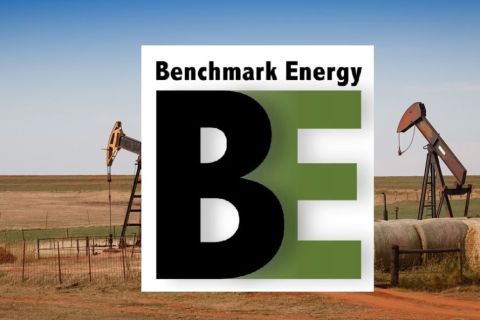
(Source: Shutterstock.com)
A volatile economy and widespread net-zero commitments combined with energy supply and security concerns have created an imperfect storm for the oil and gas industry. Unfortunately, the groups responsible for these headwinds also exercise tremendous control over the broader investment narrative and continue to not only influence capital access but also energy policy. Furthermore, once these types of viewpoints are baked into regulatory practice, it will be difficult to reverse.
The top three ESG trends for Q1 2023 include:

1. BlackRock’s voting democratization will gain popularity and likely be adopted by State Street and Vanguard, thereby adding an entirely new roster of stakeholders and straining companies’ investor engagement resources. BlackRock CEO Larry Fink’s 2022 letter outlines a systematic change to proxy voting and marks a potentially disruptive inflection point within the conventional proxy voting process. BlackRock’s client base now possesses the ability to directly vote on climate-related and human capital-related issues. Finks’ letter specifically reinforces that “this new ecosystem will also pose challenges for CEOs and their companies. Those of us who lead public companies will have a broader set of shareholders with whom to engage. Companies may need to develop new models of engaging with asset owners on their most important voting matters. This may take time to evolve.”
This enables broader shareholder groups to incorporate and perpetuate adverse biases against the energy sector. The best counter to this approach centers on tactical data organization, mapping to influential disclosure frameworks, data verification and pre-emptively understanding where disclosure and ESG-related performance vulnerabilities exist.
2. General partners will be required to provide specific ESG-related quantitative data, not only to proactively convey material differentiators but also to keep fundraising efforts alive. The regulatory landscape has finally caught up with the disclosure expectations for both debt and equity investors. The U.S. Securities and Exchange Commission Climate Disclosure Mandate is the most obvious example; however, capital markets participants must also account for the corresponding ripple effects stemming from the Sustainable Finance Disclosure Regulation in Europe and the Office of the Comptroller of the Currency announcing in 2021 a proposal to address climate-related financial risks by banks. Regardless of your perspective on climate disclosure, the global regulatory market has begun requiring it. Disclosure expectations associated with public companies are anticipated to trickle into private markets in 2023. Although not mandated by current U.S. law or regulation, it is now common practice for large influential investors to require private equity clients to provide certain ESG-related data points consistently and quantitatively.
3. Shareholder proposals will increase their focus on ESG data. BlackRock and State Street are expected to become more aggressive in requesting climate disclosures and directives from public companies. BlackRock voted against 255 directors in 2021 (up from 55 in 2020) and failed to support the management of 319 companies for climate-related reasons in 2021 (up from 53 in 2020). In its 2022 proxy voting summary, BlackRock “saw a 133% increase in the number of environmental and social shareholder proposals, many of them more prescriptive than in prior years.” Importantly, approximately 25% of BlackRock’s assets under management are also invested in issuers with science-based targets or equivalent and are striving to hit 75% by 2030. State Street announced in 2022 that it will launch a targeted engagement campaign with the most significant emitters in their portfolio to encourage and enhance disclosure aligned with its expectations for climate transition plans, which covers 10 areas, including decarbonization strategy, capital allocation, climate governance and climate policy.
Beginning in 2023, State Street will “hold companies and directors accountable for failing to meet these expectations.” Despite their withdrawal from the Net Zero Asset Managers initiative, Vanguard stated they will continue to “interact with companies to understand how they address material risks, including climate risk.” In short, companies, both private and public, must enhance their respective sophistication with greenhouse gas modeling, measurement and mitigation.
“The inevitable ramp up of disclosure requirements creates an important window for the oil and gas industry to proactively communicate with shareholders and help rectify the anti-fossil fuel narratives.”– Dan Romito
Objective communications is critical
The inevitable ramp up of disclosure requirements creates an important window for the oil and gas industry to proactively communicate with shareholders and help rectify the anti-fossil fuel narratives in the most objective way possible. The regulatory environment generally moves at a glacier space, but once it settles on incremental regulatory measures, reversing course and retracting measures rarely occur. To mitigate the existing gap, management teams would do well to take the following proactive steps:
- Initiate or update a bottom-up materiality assessment and employ an objective, data-driven approach to quantitatively identify and prioritize competitive differentiators and drivers of valuation premium.
- Customize the materiality assessment to include vendors, customers, investors, employees, management, board members and even some industry detractors.
- Implement a reporting infrastructure that allows the team to systematically track trends, progress and vulnerabilities for the data points, which best represent the non-fundamental competitive drivers of the business.
- Ensure the reporting and selected disclosures not only meets the expectations of the impending regulatory environment and existing investor base but also the expectations of aspirational generalist investors.
- Proactively identify potential vulnerabilities and organize a concise narrative outlining how the company will specifically address and rectify the matter; turning a blind eye or ignoring will only prove counterproductive in the long run.
- Preemptively disclose and assertively convey a strategic narrative based on what the company is anticipated to look like and what a generalist would expect as opposed to relegating perspective to the conventional energy peer class.
Wherever one stands on the issues, they are not going away. The pursuit of quality capital is only becoming more difficult; therefore, management teams must implement a more thoughtful and data-driven approach into their respective messaging. The companies that adopt this perspective will proactively mitigate adverse impacts, while the companies that do not will find themselves playing from behind.
Dan Romito is a consulting partner with Pickering Energy Partners, where he focuses on quantitative ESG strategy and implementation.
Recommended Reading
EIA: Permian, Bakken Associated Gas Growth Pressures NatGas Producers
2024-04-18 - Near-record associated gas volumes from U.S. oil basins continue to put pressure on dry gas producers, which are curtailing output and cutting rigs.
Benchmark Closes Anadarko Deal, Hunts for More M&A
2024-04-17 - Benchmark Energy II closed a $145 million acquisition of western Anadarko Basin assets—and the company is hunting for more low-decline, mature assets to acquire.
‘Monster’ Gas: Aethon’s 16,000-foot Dive in Haynesville West
2024-04-09 - Aethon Energy’s COO described challenges in the far western Haynesville stepout, while other operators opened their books on the latest in the legacy Haynesville at Hart Energy’s DUG GAS+ Conference and Expo in Shreveport, Louisiana.
Mighty Midland Still Beckons Dealmakers
2024-04-05 - The Midland Basin is the center of U.S. oil drilling activity. But only those with the biggest balance sheets can afford to buy in the basin's core, following a historic consolidation trend.
Mesa III Reloads in Haynesville with Mineral, Royalty Acquisition
2024-04-03 - After Mesa II sold its Haynesville Shale portfolio to Franco-Nevada for $125 million late last year, Mesa Royalties III is jumping back into Louisiana and East Texas, as well as the Permian Basin.





